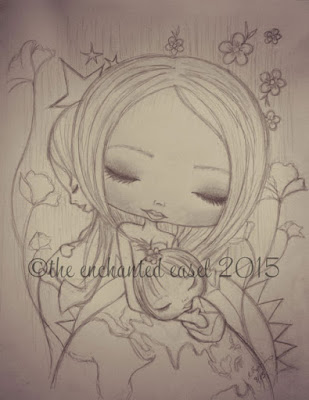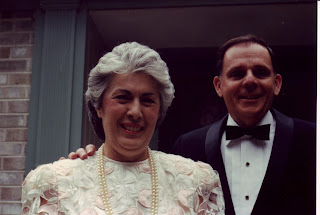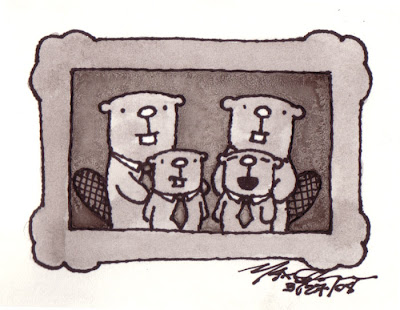One of the readers of my novels pointed out jokingly that my characters love food and wine and drink copious amounts of coffee. She is right! I enjoy reading food descriptions in novels and many of my characters like to eat and drink.
Food, the preparation and enjoyment of it, can be a powerful device in a novel. Eating is a very sensual thing and in our writing, we try to convey sensual experiences with words. We want our readers to be involved with the story and one way to do this is to let them perceive the world through the senses of the characters. Let them smell, hear, see, and taste. It brings the story to life and makes for much more interesting reading.
In addition, the way we eat, what we eat, like any other activity, can say something about the rest of our lives and hence, in a novel, about the lives of the characters we create. Here are a few examples of my novels where food plays a role in the Family Portrait trilogy.
The first book, An Uncommon Family, starts with six-year old Karla, eating an ice cream cone:
Karla licked the crispy cone, trying to catch the sliding droplets before they hit the ground. The raspberry ice cream was a dark purple, her favorite color. … She turned around and peered through the window of the art shop, where her aunt was picking up two framed pictures. When she looked back at the sidewalk, her breath caught.
“Mama?” she whispered.
She saw the woman only from behind, but the bounce in her step, the long, reddish-blond hair flowing down her back, swaying left and right, the tall, slender figure—it must be her mother. She tossed the rest of the ice cream into the trashcan, got up, and ran after the woman.
The above “ice cream scene” encompasses one of the books main themes: Karla’s longing for her mother. When a young girl tosses her favorite ice cream cone into the trash to run after someone, that someone must be critical to her life. The child’s action startles us and we are eager to know what happens. Seeing a woman who reminds her of her mother turns the peaceful enjoyment of her sweet into a heartbreaking chase after a phantom. As we find out a little later, Karla’s mother is in fact dead and the child hasn’t been able to fully accept her loss yet.
Later in the book, Karla tells her painting teacher and mentor, Jonas, about a dream that scared her and made her sad. Jonas knows just the thing that would bring some relief to Karla: comfort food or drink—a cup of hot chocolate topped with whipped cream—which he lovingly prepares.
Jonas poured the milk into the mugs, shook the bottle of whipped cream, and squeezed a dollop out of it. “Try it.” He handed a mug to Karla. Karla took a sip and licked some of the whipped cream off the top. “Good,” she said.
They sat on the couch in the living room, sipping hot chocolate. Karla put her mug down on the table and walked over to the wall to look at a photo of Eva. She stood in front of the picture, seemingly absorbed, then turned around. “She’s very pretty.”
Jonas nodded. “Yes, she was beautiful.”
Karla came back to the sofa and picked up her mug again. After she took another sip, she gazed at Jonas with her large dark eyes. “Do you dream about her sometimes?”
“Yes, quite often.”
The scene shows us something about Jonas’s kindness and love of his student, and it introduces us to his own heartbreak.
Other food scenes in the book provide information about the environment and the seasons in Switzerland. The scent of roasted chestnuts in the old town of Zurich, a restaurant that serves fondue in winter, or, in summer, the refreshing taste of ice-cold gazosaor lemonade.
In the second book, Love of a Stonemason, Karla invites Andreas, her new boyfriend, a stonemason and sculptor, for dinner. It is raining and Andreas builds a fire in the fireplace. The scent of burning wood and the smell of cooking mingle, creating a sensuous atmosphere which leads to their first lovemaking. In the morning, they wake up hungry and Karla prepares a rich breakfast of eggs, bacon, bread, butter, and jam.
Andreas scraped up the leftover egg with a piece of bread and licked his fingers. “This is excellent, by the way.” He pointed at his plate. “I could get used to this.”
“I’m glad you like it.” Karla was amused by his appetite.
Here we get a glimpse of Andreas’ character. He is a sensuous man, somewhat unpolished but compassionate. He enjoys food and Karla, who is a talented painter and an excellent cook, knows the saying, “the way to a man’s heart is through his stomach,” and prepares some outstanding meals. Another dinner scene gives us some insight into the characters of Andreas’ family, when Karla meets his mother, his aunt and uncle for the first time.
It was only now that Karla noticed a third person in the room, a thin, quiet, unassuming woman, probably in her fifties. Andreas introduced her as his mother. She greeted Karla with a shy smile. After saying hello, she seemed to disappear among the other people. Karla was amazed how little mother and son resembled each other.
Aunt Maria had prepared a typical dish of the area for lunch—coniglioand polenta, rabbit stew with slices of corn mush fried in olive oil and topped with parmesan cheese—as well as vegetables and salad. It was a very tasty meal, but Karla, who by nature wasn’t a big eater, constantly had to stop Maria from putting more food on her plate. “Cara, you’re much too thin, you have to eat.” Uncle Alois tried to put another piece of meat on Karla’s plate.
“Leave her alone, for god’s sake,” Andreas finally intervened. “You know, Alois, not everybody can eat as much as you do. You could actually do with a little less yourself. You must be twice as fat as when I saw you last time.”
“Don’t be fresh, young man.” Uncle Alois grinned. “Here, have some more wine.”
In the above scene, we get to know the family by the way they behave at the table. We see Andreas’ unassuming mother, we witness his kindly aunt and boisterous uncle showing their old-fashioned hospitality and we experience the playful bantering between Andreas and his uncle and we realize that Karla despite her cooking skills is a slender woman and modest eater.
In Emilia, the third book of the trilogy, a meal at a grotto in the south of Switzerland (grotto is a special kind of country restaurant), Andreas and his children eat out, since Karla, the mother, was visiting her ailing father in Peru. The youngest child, Emilia, wants to eat her spaghetti the same way her older sister does, rolling the strands on her fork.
He (Andreas) scrunched his forehead and glared at Emilia. “What are you doing? Stop playing with your food.”
Emilia, who had been trying to roll spaghetti on her fork, which kept sliding off, looked at him with big eyes, which quickly filled with tears. She was obviously shocked at her father’s unusually harsh tone. So was Laura.
An otherwise loving father, Andreas also has a temper and the tension that has been building between him and his wife brings out his angry side. The conflict in the family is made even more obvious during a meal, which is normally a time of sharing and relaxation.
In all these examples food is used both as a way to enrich and enliven a story as well as showingunderlying themes and giving us insight into the characters. Thank you for stopping by to share your food for thought, Christa!
You can find Christa and her books here:
















What a wonderful family you have! I love the thought of your mother's gifts and your father taking such great care of all of the plants.
You look so much like your father in that photo!
Lovely post, Beth. :)
What a lovely surprise to find the gifts and wrapping paper. To have a chance to stumble upon your memories. What a wonderful photo.
Beautiful thoughts and photo.
My grandfather shows this kind of love and respect to my grandmother who is gone. I just love it.
Beautiful post about all those treasures you continually find in your parents' home. Lovely photo.
So touching ... beautiful post.
Oh, my goodness.
You are so very lucky, Beth. In so many ways.
As are the members of your family.
Remember and enjoy...
XO
Anna